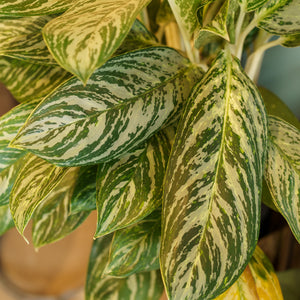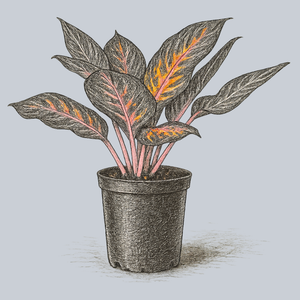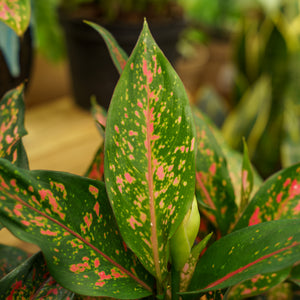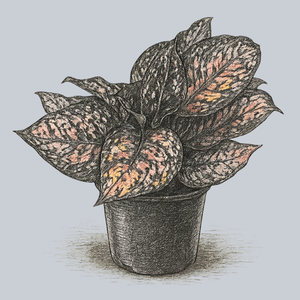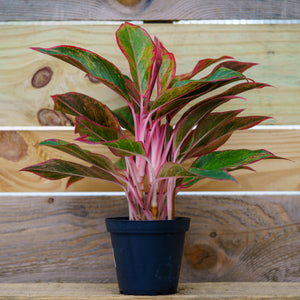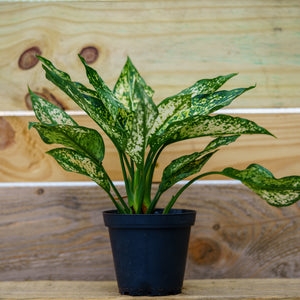The Aglaonema Guide
Aglaonema, commonly known as Chinese Evergreen, is a genus of tropical plants prized for their striking foliage and adaptability. Native to the lush regions of Asia and New Guinea, these plants bring both elegance and practicality to homes, offices, and gardens. Their leaves, showcasing a variety of greens, silvers, and reds, add color and texture to any space. Aglaonema’s tolerance for low light and minimal maintenance needs make it an excellent choice for anyone looking to incorporate greenery into their environment.
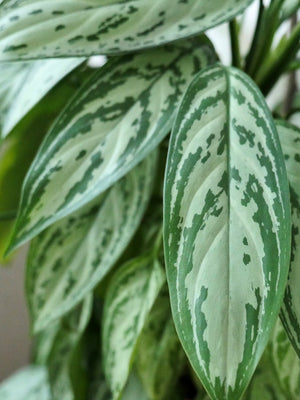
About
Chinese Evergreen, part of the Araceae family, is known for its evergreen foliage and ability to thrive with limited attention. With over 20 recognized species, Aglaonema plants are versatile, adapting well to both indoor and outdoor settings. Their broad, lance-shaped leaves often feature intricate patterns that enhance their visual appeal, from the creamy contrasts of ‘Golden Madonna’ to the vibrant red tones of ‘Red Valentine.’
These plants are not just decorative; they also contribute to healthier indoor air by naturally filtering pollutants. Their modest growth habit, typically reaching one to three feet in height, makes them suitable for various uses, including tabletops, floor displays, and mixed arrangements. Although they may occasionally produce small, unobtrusive flowers, Aglaonema is primarily admired for its foliage.
Whether you're new to plant care or have a green thumb, Aglaonema offers an approachable way to enhance your living or working space. It grows well in various soil types, though it prefers well-draining, peat-based mixes. These plants thrive in low to moderate light and adapt to a range of humidity levels, making them suitable for nearly any environment.
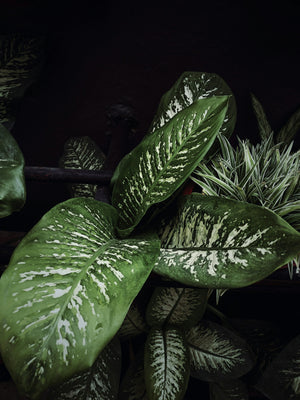
Planting
To successfully plant Aglaonema, follow these guidelines:
- Soil: Use a well-draining soil mix rich in organic matter. Slightly acidic to neutral soil (pH 5.5–6.5) is ideal. Incorporate compost or peat moss to improve fertility and drainage.
- Sunlight: Position Aglaonema where it will receive bright, indirect light or partial shade. It tolerates low light but avoid direct sunlight, which can scorch its leaves.
- Watering: After planting, water thoroughly and maintain consistent moisture. Allow the top inch of soil to dry between waterings to prevent overwatering and root rot.
- Mulching: Apply a layer of organic mulch, such as wood chips or bark, around the plant's base to conserve soil moisture and regulate temperature. Leave space between the mulch and the stem to prevent excess moisture buildup.
- Pruning: Minimal pruning is needed. Remove yellowing or damaged leaves during the growing season to keep the plant healthy and attractive.
Following these steps will help Aglaonema establish itself and thrive, ensuring it becomes a lasting addition to your space.
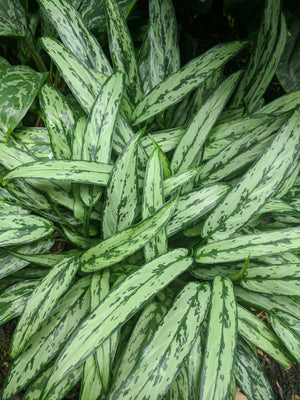
Care
Keeping Aglaonema healthy involves straightforward care practices:
- Watering: Provide moderate watering, ensuring the soil stays evenly moist but not soggy. Check the top inch of soil and water when it feels dry. Increase humidity with misting or a humidity tray during dry periods.
- Fertilizing: Feed with a balanced, water-soluble fertilizer every 4–6 weeks during spring and summer. Avoid over-fertilizing, which can harm the plant.
- Light: While tolerant of low light, Aglaonema grows best in bright, indirect light. Avoid harsh sunlight, which can damage leaves.
- Pest and Disease Management: Check regularly for pests such as spider mites, mealybugs, or aphids. Use insecticidal soap or neem oil for infestations. Prevent fungal issues by avoiding overwatering and ensuring proper air circulation.
- Cleaning: Wipe leaves with a damp cloth to remove dust and improve light absorption.
With these care tips, Aglaonema will continue to add beauty and greenery to your environment for years to come.
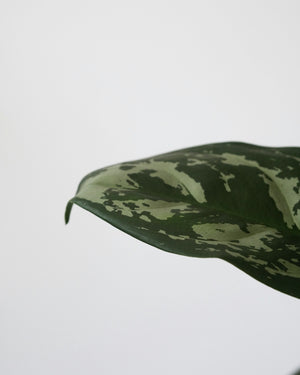
How To Use
Aglaonema’s versatility makes it an asset in various settings:
- Indoor Displays: Brighten dimly lit areas with their vibrant foliage, whether in living rooms, offices, or hallways. Their air-purifying qualities add to their appeal.
- Decorative Accents: Use decorative pots or containers to highlight their colors and patterns. Place them on shelves, tabletops, or windowsills to create visual interest.
- Focal Points: Group Aglaonema varieties to create a dynamic arrangement or use a single plant as an understated yet eye-catching centerpiece. Popular varieties such as ‘Siam,’ ‘Jazzed Gems Garnet Coltrane,’ and ‘Spring Snow’ bring unique textures and tones to any space.
- Container Gardening: Move potted Aglaonema plants between spaces, bringing greenery to patios, decks, or balconies.
- Mixed Plantings: Pair with other tropical plants to design lush indoor gardens or accent larger landscapes.
- Office Greenery: Perfect for desks or corners, Aglaonema thrives in office settings with minimal upkeep, adding a calming touch to workspaces.
Whatever the setting, these plants enhance your surroundings with their adaptable and low-maintenance nature.
Conclusion
Aglaonema is more than a plant; it’s an opportunity to bring life and beauty into your space with minimal effort. Whether you’re enhancing your decor, improving air quality, or simply enjoying a connection to nature, Aglaonema offers lasting value. Its adaptable nature and striking foliage make it an ideal addition to homes, offices, and gardens alike. By incorporating Aglaonema into your environment, you’re not just adding greenery—you’re creating a more welcoming, harmonious space that feels complete.

